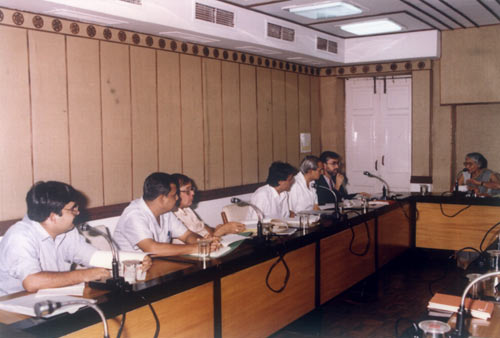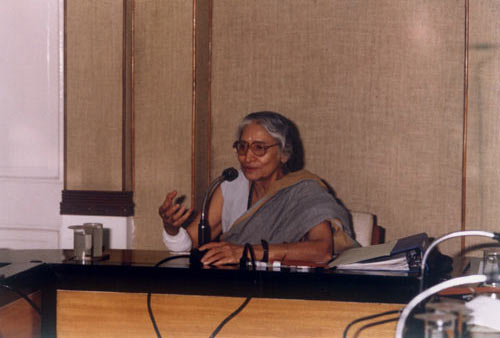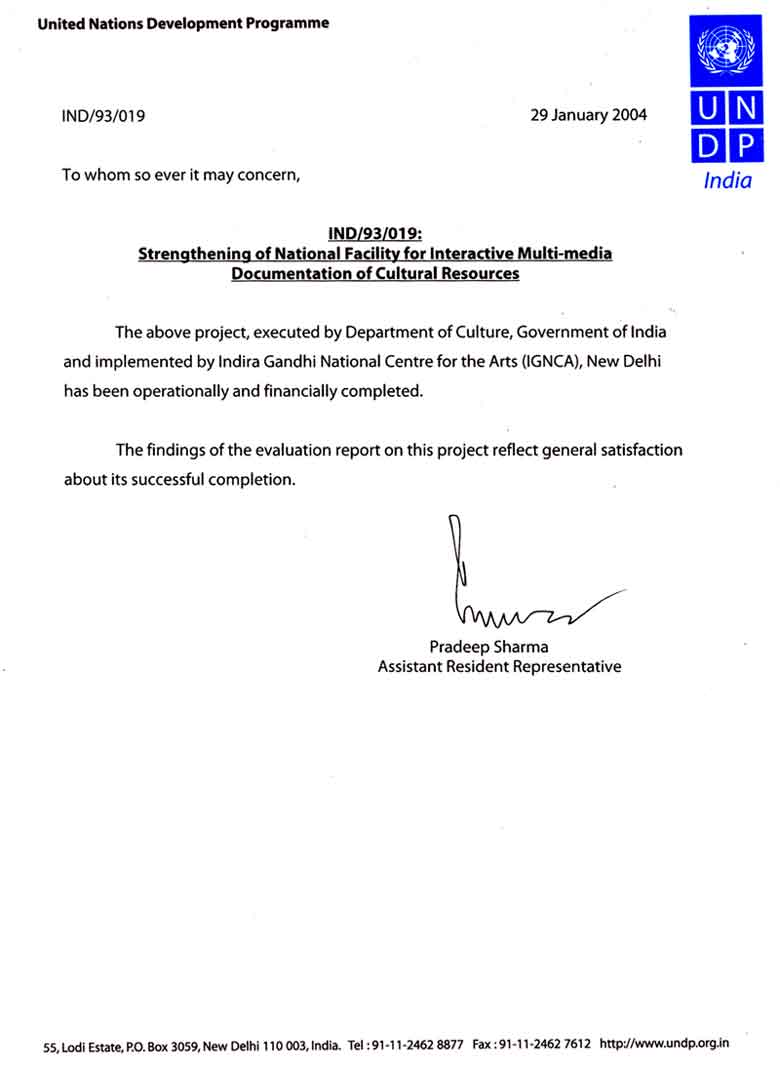UNDP PROJECT
“Strengthening National Facility for Interactive Multimedia
Documentation of Cultural Resources”
Government of India recognised culture, like environment, at the core of all developmental activities. The 8th Five Year Plan of India articulates this concern, stressing that culture gives a sense of direction and guidance to human life for pursuing goals, cultivation of good values and attainment of excellence in every walk of life. Since, human development is the process of enlarging peoples’ choices, as the UNDP Human Development Reports emphasize, the role of the arts and culture in enlarging choices and enriching life cannot be exaggerated. The national Plan document, therefore, underscores the need to preserve, document, express and disseminate the numerous cultural styles and traditions-classical, folk and tribal.
Recognizing that value-systems and life-styles are major driving forces of the producton and consumption patterns of the people, Agenda-21, brought out at the UN Conference on Environment and Development 1992, iterated that the integration of environment and development must be reflected in a reorientation of attitudes, in changes in decision making and in the data and information systems for planning, implementation and monitoring. In this context, while specifically pleading for strengthening the endogenous institutional and professional capacity, Agenda-21 urges that the endogenous knowledge and cultural heritage of developing countries must also be integrated with modern knowledge and technology.
In the final report of the Inter-Governmental Committee of the World Decade for Cultural Development (1988-97), the Director General of UNESCO makes it clear that “More than anything else, the state of the planet’s environment is a reflection of our values and our attitudes – and any changes in our relationship with the earth’s environment will necessarily entail a revolution in our attitude, values and behaviour. In a word, the state of environment is to an important extent a reflection of the state of our culture”.
In the light of the nexus between environment, development and culture, in the true sense of the terms, the need for creation of a facility that would use modern technology to comprehend the unique and vast diversity of India’s heritage cannot be overemphasized. This should be disseminated, through appropriate networking, both within the country and without, to the policy makers, scholars, teachers and the common citizens. Through its programmes, besides heightening general awareness, IGNCA would be able to demonstrate that culture and development are not in confrontation and suggest how goals of development should be refined / redefined, taking cognisance the quality of the life that nurtures the creative in human beings. It would be possible for IGNCA, with UNDP-assistance, to demonstrate how fragments of a cultural past can be reconstructed, at least virtually, so that not only the product but the process as also the values underlying a cultural heritage are accessible” to the current and future generations in the modern language of technology. The Indira Gandhi National Centre for the Arts has been entrusted with this responsibility and has been empowered legally, financially and administratively – to carry out this mandate effectively. In the process, the Centre availed of a preparatory assistance from UNDP with experts from India and abroad who finally came up with the initial draft of this proposal. Diversity of the country being so enormous and the government’s resolve to preserve such diversity being clear, it is imperative that such an exercise, to be accomplished in a short time-frame, requires global expertise.
The Government of India being conscious of the central role of culture in the human resource development set up IGNCA in 1987 to look at the art and development as central to all life. IGNCA being an autonomous trust has been designated as a nodal agency to prescribe technical standards for all agencies under central and state govenment for storage, retrieval and dissemination of data on arts, humanities and cultural heritage. “It has already launched a massive programme for collecting multimedia primary and secondary source materials by identifying 3,000 repositories of unpublished manuscripts in various institutions and laboratories and micro-filming of un published manuscritps”.
IGNCA was set up as an autonomous trust in the Department of Culture, Ministry of Human Resource Development, Government of India to demonstrate central role of art in life. Under one of its four academic divisions, IGNCA has, for instance undertaken lifestyle-studies of tribal communities and their art-forms throughtout India.
The Government of India setup Standards Technical Group (STG), under the Chairmanship of Additional Secretary, Planning Commission and Director General, National Informatis Centre (NIC) to advise IGNCA on the hardware and software requirements for setting up the NISDB. This multi-disciplinary STG includes experts from various government departments / organizations, namely Deparment of Space, Department of Science and Technology, National Remote Sensing Agency, National Centre for Software Technology, etc. A representative of STG will be a member of the Project Advisory Committee. This is how the linkage between the STG and IGNCA and various other participating and user ministries and organizations will be ensured
PRESENT SITUATION
IGNCA is functioning as a national resource centre for the arts to catalyse an integrated perception of Indian traditions and to stimulate awareness of our precious heritage amongst policy makers, scholars, technologists, planners, tourists, students, common people, etc. At present financial and intellectual investment in comprehensive documentation of scattered and fragmented heritage is not matched by outputs due to lack of use of appropriate technology. This is also mainly because of the lack of availability of suitable data models and encoding standards for developing multimedia presentations in the field of art and culture and due to lack of availability of trained manpower to handle appropriate technology.
EXPECTED OUTCOME
IGNCA would be suitably strengthened both in terms of manpower and infrastructure so as to fulfil its mandate more effectively. There will be substantial jump in the rate of systematic and integrated documentation and dissemination of cultural resources. Data models and encoding standards would be available in the field of art and culture and trained manpower would also be available. They would form the core group of professional who in turn would train others. The linkage between IGNCA and other institutions would be strengthened and IGNCA would be enabled to effectively discharge its responsibilities as mandated. Besides, IGNCA will be in a position to disseminate the processed information to the target beneficiaries in an effective manner so as to bring about a qualitative change in the perception of the people in general and development practitioners in particular.
Thus at the end of the project, IGNCA would be empowered to operationalise the inter – linkages between culture, in the broad sense of the term, and development, for which IGNCA would adopt an aggressive outreach approach that would cover each set of target beneficiaries listed below, by way of specially designed programmes. Through this outreach approach, IGNCA will cover large cross-sections of people so that development could be people-centred and environment friendly, for it to be sustainable. The project will also contribute towards the objective of the World Summit for Social Development (March 1995) to agree on joint action for reducing poverty, expanding productive employment and enhancing social integration.
 |
 |
 |
|
 |
 |
 |
|
 |
 |
 |
PROJECT COMPLETION CERTIFICATE





